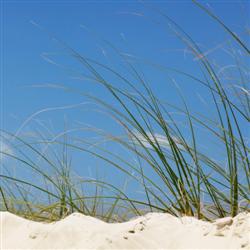Panama City Marketplace
Guide to Panama City Florida
The History of Panama City
The history of Bay County Bay County was established from Washington County in 1913 and named for St. Andrews Bay, which borders the county. During World War II Panama City developed as a shipbuilding and industrial center.
The State Archives of Florida is the central repository for the archives of Florida's state government. It is mandated by law to collect, preserve, and make available for research the historically significant records of the state, as well as private manuscripts, local government records, photographs, and other materials that complement the official state records.
The History of St. Andrews St. Andrews has been an excellent place to live for as long as people have inhabited the Americas. During the last Ice Age, with sea levels as much as 350 feet lower than present, a pathway was forged from this area all the way to Alaska that then traversed an exposed land bridge between northwest North America and Asia. Pleistocene animals easily traveled across this land bridge and they were eventually pursued by "hunter- gatherers" in search of game. The fossil remains of mammoth, mastodon, saber-toothed cat and camel have been found in the upland spring runs and creeks that feed St. Andrews Bay.
Locally found artifacts attest to the fact that Native Americans have been in our area for at least 13,000 years. When people first arrived here, the sea level was still nearly 100 feet below present levels and the gulf shore line was about 15 miles further south. Our bay was mostly high and dry with Econfina Creek creating a valley running towards the Gulf. This means that the coastal forests and embayments which they encountered are now submerged offshore and the then interior river valleys flooded to create today's area deep water bays, such as St. Andrews Bay.
Our local Native Americans had a rich and varied culture that changed through time in response to changes in climate conditions, resource availability, technological improvements and population increases. As the Ice Age waned, less hunting gave way to more gathering, as can be evidenced by the numerous shell middens scattered along St. Andrews Bay (an ancient midden and occupation site is located within our Oaks By The Bay Park). From 5000 to about 2500 years ago some of these middens evolved into mounds to inter the dead. By 700 AD these mounds were having temples constructed upon them, and there had developed a vigorous trade of locally crafted shell goods that found their way to places as distant as Minnesota and New York.
At contact period with the Spanish around 1500, our area was inhabited by the Chatot and Yucci tribes. Shortly after contact, the Chatot became extinct (as did over 90% of Florida native peoples) and the Yucci escaped such a fate by dispersing to the north and west. The area gradually became peopled again around 1700 AD and later on by Creeks and Cherokees who had evaded relocation to the West that culminated in the Trail of Tears in the 1830's. By this time many white settlers had moved into the area and a new Native American tribal group was organized south of here in south central Florida. They became the Seminoles.
The first European settlement in the St. Andrews Bay area was along Beach Drive between Frankford Avenue and Lake Caroline. Retired Georgia Gov. John Clark and his wife Nancy built a home and lived there from 1827 until their deaths in 1832. Just a few people resided year round in St. Andrews, earning a living making salt, fishing, and boarding vacationers who came to the area for the "healthy sea baths" and the fishing.
By the mid 1800's the summer population was between 1,200-1,500. The Clark home was converted to a hotel known as "the Tavern". A visitor to the hotel was noted Southern writer Caroline Hentz. Lake Caroline was named for her. In 1845, the town was referred to as "St. Andrews" by the post office. The geodetic survey of 1855, the first official survey, showed the town as "St. Andrews City" and the bay was called "St. Andrews Bay". In 1902 the post office accidentally left the "s" off and never corrected it. The St. Andrews Bay News, printed by George M. West in the early 1900's, listed the town as "St. Andrews", but referred to the post office as "St. Andrew". Most continue to refer to the town as "St. Andrews".
During the Civil War, it was a strategic supplier of salt to the Confederate troops, which made it a target for the North. Many raids were made in the area by Federal troops, and eventually the town was destroyed in 1863.
Lambert Ware visited the area in 1877, and then returned in 1879. His brother Francis joined him in 1882, and they operated Ware Mercantile and Ware's Wharf, on the present Ramada Inn and St. Andrews Marina sites. The town flourished again with salt, fishing, boat building and shipping along the gulf coast. About this time, the St. Andrews Bay Railroad, Land, and Mining Co., locally known as the Cincinnati Company because they were based in the town in Ohio, advertised mail-order real estate with this descriptive: "The loveliest location in all Florida. In a land where the genial climate of a winterless round of years will reward your every effort with the most bountiful harvests; where the summers are joyous seasons of refreshing breezes and invigorating nights of cool and healthful slumber; and where the winters are but bewitching contrasts to the summers in heightening and intensifying the delicious pleasure of a life in the fairest land the sun ever blessed with it's genial kiss. There is but one Florida, and St. Andrews Bay is it's brightest jewel." In the beginning, lots approximately 25 ft x 82 ft were sold for $1.25, then later the price escalated to $8.00 for a lot in "St. Andrews by the sea". The scheme finally busted, but not before some of the buyers decided they really liked the area and stayed.
In 1908, St. Andrews incorporated for the first time. It continued to grow in the early 1900's and became a popular port on the coast. The Tarpon traveled between Mobile and Apalachicola, stopping like clock work in St. Andrews, delivering beer, flour, and other supplies. One could "set your watch" by the arrival and departure of the Tarpon, and it was this persistence of her captain, and the fact she was overloaded, that led to her demise. He pushed her on through a storm to be on time, but she sank off Panama City Beach in 1937. The site is now an underwater archaeological preserve.
Other towns had grown up in the area, one of those being Panama City, which annexed St. Andrews, and 3 other small towns in 1927.
Panama City became an important port, and was used for building ships (and later dismantling them) during World War II. Clark Gable was here during that time and patronized local restaurants in St. Andrews. Charter Boats, restaurants, and shops in St. Andrews were bustling with people in the mid-1900's. The community was a "destination". The center of attention shifted as Panama City Beach opened up to traffic. In the 1980's, commerce in St. Andrews took a sharp dive as the business community left for the "new" territory in Panama City Beach.
The Panama City Commission recognized the need to revitalize St. Andrews and the potential there. In 1989, St. Andrews was designated as a Community Redevelopment Area. That, and a variety of grants from the State of Florida, in the form of cash and technical assistance, have been used as the tools for revitalizing St. Andrews into a sustainable waterfront community. The redevelopment process has been an innovative, successful partnership between the city and the citizens.
More Resources
Super Shopper


